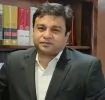Limitation under the Insolvency and Bankruptcy Code, 2016 ("IBC") has become contentious in the post COVID-19 era. With the Supreme Court's blanket pause in computation of the limitation period from March 15, 2020 to October 1, 2021 ("suo moto order") the question of limitation is being raised frequently before Courts.
Most recently, in the case of V. Nagarajan v. SKS Ispat and Power Ltd. & Ors.1 the issue before the Supreme Court was in connection with calculating limitation period for filing an appeal under section 61 of IBC.
This article discusses key aspects of the Supreme Court's judgement.
Facts of the Case (Limited to the decision of the Supreme Court)
The liquidator for Cethar Ltd. (under liquidation) ("Appellant") filed an application seeking interim relief against invocation of a performance bank guarantee before the National Company Law Tribunal, Chennai ("AA / NCLT"). The AA refused this application on separate grounds on December 31, 2019. An appeal was filed against the AA's order on June 8, 2020 before the National Company Law Appellate Tribunal, New Delhi ("NCLAT").
The Appellants' appeal was dismissed by the NCLAT on limitation and on merits. Against said decision, Appellant approached the Supreme Court for relief.
Issues for decision before the Court and provisions under discussion
The limited issues for adjudication before the Court were: (i) when the clock for calculating limitation period under IBC runs; (ii) whether annexation of certified copy is mandatory for appeal under IBC.
In deciding these issues, the provisions of the Companies Act, 2013 ("CA'13"), National Company Law Tribunal Rules, 2016 ("NCLT Rules"), National Company Law Appellate Tribunal Rules, 2016 ("NCLAT Rules") and the Limitation Act, 1963 ("LA'63") were considered.
What the parties argued
The arguments of both the parties have been discussed hereunder.
Appellants' Arguments
The Appellant stated that AA's order rejecting his application was passed on December 31, 2019. However, a copy of the same was uploaded on the court website only on March 12, 2020 (original order) and March 20, 2020 (corrected order).
The Appellant further argued that he was entitled to a free certified copy of the AA's order per section 420(3) of CA'13 and rule 50 of NCLT Rules.2 According to him, these provisions were applicable to IBC as in the case of B.K. Educational Services (P) Ltd. v. Parag Gupta and Associates3, it was noted that section 408 of CA'13 allowed NCLT to discharge authority under CA'13 and any other law.
In view of this, the Appellant believed that he was precluded from obtaining a certified copy of the AA's order separately, as he was entitled to a free copy (which he had not received). Therefore, his stand was that the clock for limitation under IBC would start running from the date a free copy of the order is issued to a party. Hence, in the present case, due to non-receipt of a free copy the limitation clock had not started running.
More so, the Appellant also stated that he was not required to file an application for condonation of delay as his appeal had been filed within time period prescribed by law and was protected by the suo moto order.
Respondents' Arguments
The Respondents drew a comparison between section 61(2) of IBC (Appeals and Appellate Authority)4 and section 421(3) of CA'13 (Appeals from orders of Tribunal).5 It stated that presence of the words "from the date on which a copy of the order of the Tribunal is made available to the person aggrieved" in section 421(3) of CA'13 did not in any way imply that parties could indefinitely wait until they receive a free certified copy of the order before filing appeals. It was argued that parties ought to apply for the certified copy in a timely fashion.
The Respondent further submitted that section 12 of LA'63 specified that limitation would be ascertained only after a certified copy is applied for during the subsistence of the limitation period. Hence, in the present case, the limitation could be calculated either from date of passing of AA's order (December 31, 2019) or date when certified copy was applied for, and if neither is complied with, appeal would be deemed as barred by limitation.
The Respondent also argued that IBC being a special statute overrode general enactments (i.e., CA'13 in the present case) and timelines under it were strict and hence, it was necessary that same were adhered to diligently and not protracted unnecessarily.
Court's Analysis and Decision
A summary of the analysis and decision of the Court on the issues raised has been discussed hereunder.
Computation of limitation under IBC
The Court stated that the absence of words - "from the date on which a copy of the order of the Tribunal is made available to the person aggrieved" in section 61(2) of IBC, could not be construed as an omission. It could not allow a litigant to supplement a right to a free certified copy under section 420(3) of CA'13 r/w rule 50 of IBC. The Court emphasized that this would essentially ignore the context and purpose of IBC. And in fact, the absence of said words from section 61(2) of IBC indicated a nudge from the legislation for the parties to be proactive and obtain certified copies in a timely manner.
The Court believed that in view of timelines for proceedings under IBC, the requirement under the CA'13 (general law) would essentially do violence to the provisions under IBC (special law).
Hence, it was held that litigants could not dispense with their obligation to apply for and obtain a certified copy. Therefore, the Court stated that the appeal in the present case was barred by limitation prior to the suo moto order coming into effect, as no certified copy was applied for by the Appellant.
Requirement of annexing certified copy with appeal
The Court relied upon rule 22(2) of NCLAT Rules (which mandates annexation of a certified copy of order with the appeal). However, it stated that despite the fact that exemptions from filing certified copies can be granted to litigants (per rule 14 of NCLAT Rules), it did not entail an automatic exception where litigants fail to apply for certified copies altogether.
In Conclusion
The Court's decision is another in the line of many such decisions wherein the issue of limitation in context of the suo moto order has been decided. IBC being a specific statute, it is critical that the object of the law is kept in mind and the provisions and rules surrounding it are interpreted in a harmonious fashion. The Court has clarified that litigants are not free to flout and misuse the provisions of law in a manner which defeats the purpose of the legislation and upsets a time-based process.
Footnotes
1 2021 SCC OnLine SC 959
2 Section 420(3) of CA'13 states that Tribunal shall send a copy of every order passed under this section to all parties concerned. (Relevant portion of the provision has been summarized)
Rule 50 of NCLT Rules states that the Registry shall send a certified copy of final order to the parties concerned free of cost. (Relevant portion of the provision has been summarized)
3 (2019) 11 SCC 633
4 Section 61(2) of IBC states that every appeal before the National Company Law Appellate Tribunal ("NCLAT") shall be filed within 30 days, however NCLAT may allow a further period not extending beyond 15-days for filing of the appeal if it is satisfied. (Relevant portion of the provision has been summarized)
5 Section 421(3) of CA'13 states that every appeal under section 421(1) of CA'13 shall be filed within 45-days from date when copy of order is made available to the aggrieved person. (Relevant portion of the provision has been summarized)
The content of this article is intended to provide a general guide to the subject matter. Specialist advice should be sought about your specific circumstances.



